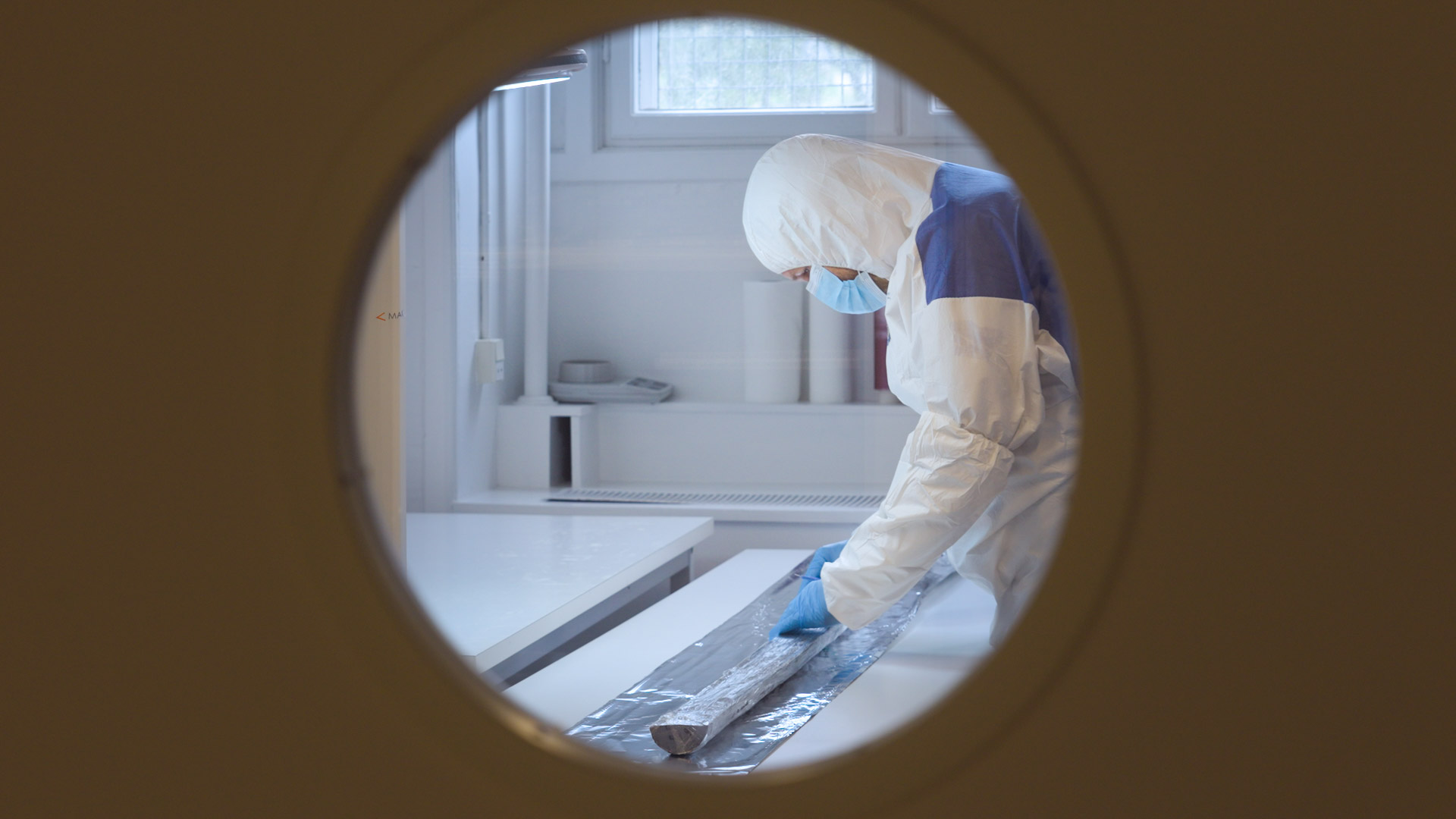DNA that was frozen for 2 million years has been sequenced
The ancient DNA fragments come from a Greenland ecosystem where mastodons roamed among flowering plants. It may hold clues to how to survive a warming climate.
After an eight-year effort to recover DNA from Greenland’s frozen interior, researchers say they’ve managed to sequence gene fragments from ancient fish, plants, and even a mastodon that lived 2 million years ago.
It’s the oldest DNA ever recovered, beating the mark set only last year when a different team recovered genetic material from a million-year-old mammoth tooth.
The new effort looked at genetic material that was left behind by dozens of species and washed into sediment layers long ago when Greenland was much warmer than today.
This story is only available to subscribers.
Don’t settle for half the story.
Get paywall-free access to technology news for the here and now.
Subscribe now
Already a subscriber?
Sign in
“Here you are getting the whole ecosystem,” says Eske Willerslev of the University of Copenhagen, who led the effort. “You know exactly that at this time, and this place, these organisms were together.”
The genetic findings, which paint a picture of an era when Greenland was covered with flowering plants and cottonwood trees, could provide clues to how ecosystems adapted to warmer climates in the past.
“Here you have a map of where and how to edit the genetics of plants to make them resilient to climate change,” says Willerslev. He adds that the ancient DNA could provide a “road map” to help plant species adapt to a climate that’s warming very quickly.
Speaking at an online press conference organized by the journal Nature, which also published the report, Willerslev said the forested ecosystem revealed by the gene fragments included flowering plants and trees, species currently absent from the area, where nothing much lives except lichen and some musk ox.
“This is an ecosystem with no modern analogue. It’s a mixture between arctic species and temperate species,” says Willerslev. “It’s a climate similar to what we expect to face on Earth due to global warming, and it gives us some idea how nature can respond to increasing temperatures.”
Some researchers have proposed using findings about ancient DNA to re-create extinct mammals like woolly mammoths, but Willerslev says plants “will be much more important” even though they are “not as sexy” as a pachyderm.
Research on old DNA began in 1984, when scientists recovered readable genes from a dried-out quagga, a type of extinct zebra. Since then, new methods and specialized gene-sequencing machines have allowed them to probe deeper and deeper into the past.
DNA breaks apart with time, so the older it is, the smaller the pieces become—until there’s nothing left to detect. And the shorter the fragments are, the trickier it is to assign them to a specific groups of plants or animals.
“The huge damage pattern made it very clear it was ancient DNA,” says Willerslev, who says he and his colleagues began working with the Greenland samples in 2006. “When it’s 2 million years, there has been so much evolutionary time, that whatever [species] you are finding are not necessarily very similar to what you see today.”
The Danish team says the DNA they found was preserved by freezing temperatures and bound to clay and quartz, which also slows down the process of degradation.
Exactly how far back in time researchers will be able to see remains an open question. “Probably we are close to the limit, but who knows,” says Tyler Murchie, a postdoctoral fellow at McMaster University who develops methods for studying ancient DNA. He notes that the Dutch researchers were successful in combining several techniques to “create a robust reconstruction of this ecosystem.”
Willerslev once predicted it would be impossible to recover DNA from anything that lived more than a million years ago. Now that he’s broken the record, he is reluctant to say where the limit lies. “I wouldn’t be surprised if…we could go back twice as far,” he says. “But I wouldn’t guarantee it.”
